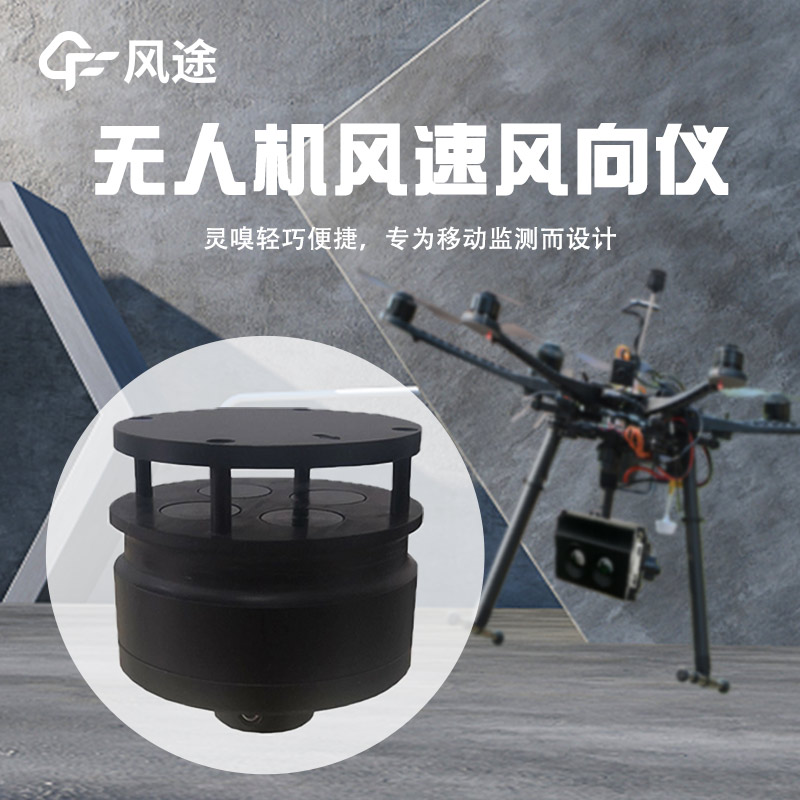Tianqiong Sensor IOT Technology Co., Ltd
Sales Manager:Ms. Emily Wang
Cel,Whatsapp,Wechat:+86 15898932201
Email:info@fengtutec.com
Add:No. 155 Optoelectronic Industry Accelerator, Gaoxin District, Weifang, Shandong, China

Sales Manager:Ms. Emily Wang
Cel,Whatsapp,Wechat:+86 15898932201
Email:info@fengtutec.com
Add:No. 155 Optoelectronic Industry Accelerator, Gaoxin District, Weifang, Shandong, China
time:2025-03-12 14:19:00 source:Weather Station viewed:238 time
In the field of wind power generation, wind measurement is of great significance. Traditional wind - measuring methods, such as wind towers or radars, are effective but have limitations. Wind towers can only measure at fixed locations, while radar equipment is expensive and bulky, making it difficult to deploy flexibly. However, wind measurement by drones, as an emerging technology, is gradually coming to the fore.
By carrying an ultrasonic anemometer, drones for wind measurement can hover precisely in the air and measure parameters such as wind speed, wind direction, and turbulence intensity in real - time. Its advantages are obvious:
It is highly flexible. Drones can easily fly to any measurement point. Especially in complex terrains and wind farms, they can quickly adjust their positions to obtain wind field data at different heights and locations, which is suitable for wind farm layout optimization and wind resource assessment.
The cost is relatively low. Compared with expensive radar equipment, the Anemometer for drones has a lower cost, is easy to operate and maintain, reducing the cost of wind measurement, allowing wind farms to conduct wind field measurements more frequently.
The data is accurate. The Anemometer for drones can transmit data in real - time. Through precise hovering and positioning, the measurement results are accurate. The data is highly consistent with the measurement results of traditional wind towers, with an error usually within 3%, providing reliable data support.
It has a wide coverage area. Drones can cover a large area in a short time, which is suitable for overall wind field measurement in wind farms. They can quickly obtain key parameters such as wind speed distribution and turbulence intensity, providing a scientific basis for wind farm layout optimization.
Currently, the drone - based wind - measurement technology is bringing a more flexible, economical, efficient, and accurate wind - measurement solution to the wind power generation industry, facilitating the layout optimization and wind resource assessment of wind farms.
The Anemometer for drones FT - F1 is a wind - measurement device specifically designed for small aircraft and unmanned platforms. It adopts the principle of ultrasonic resonance and achieves accurate measurement through the relationship between the propagation of ultrasonic waves in the air and wind speed and direction. It weighs only 56g, with a diameter of 46mm and a height of 48mm. It is small and lightweight, and has minimal impact on the load and flight performance when installed on drones and other platforms. This instrument has strong environmental adaptability and can work normally at an altitude of 4000 meters and in an environment with a temperature range from - 40°C to + 70°C. It also has strong anti - electromagnetic interference, waterproof, and dust - proof characteristics. In terms of measurement accuracy, the wind speed measurement range is 0 - 60m/s, with an accuracy of 3% and a resolution of 0.1m/s. The wind direction measurement range is 0 - 359°, with an accuracy of ±3° and a resolution of 1°. Its digital output is RS485, with a baud rate of 4800 - 19200, and the communication protocols include ModBus and ASCII.

The petrochemical production process involves a large number of flammable and explosive chemical substances, such as crude oil, gasoline, ethylene, and so on. During storage, transportation, and production, these substances can easily trigger explosions and fires once they encounter an ignition sour...
The River Flow Monitoring System is mainly used for remotely grasping the real-time hydrological conditions of various water areas, including natural rivers, artificial canals, and landscape watercourses. It assists relevant authorities in promptly recording the dynamic changes of river water source...
The Portable el detector is an important device used to detect various defects in photovoltaic (PV) cell modules. It can accurately detect defects such as hidden cracks, fragments, and poor soldering in PV cell modules. These internal defects can seriously affect the service life and long-term power...
In the monitoring of soil erosion in runoff plots and small watersheds, the traditional manual measurement model has long faced numerous bottlenecks. Staff need to carry various instruments to and from monitoring points, not only to conduct flow observations in complex terrain but also to manually c...